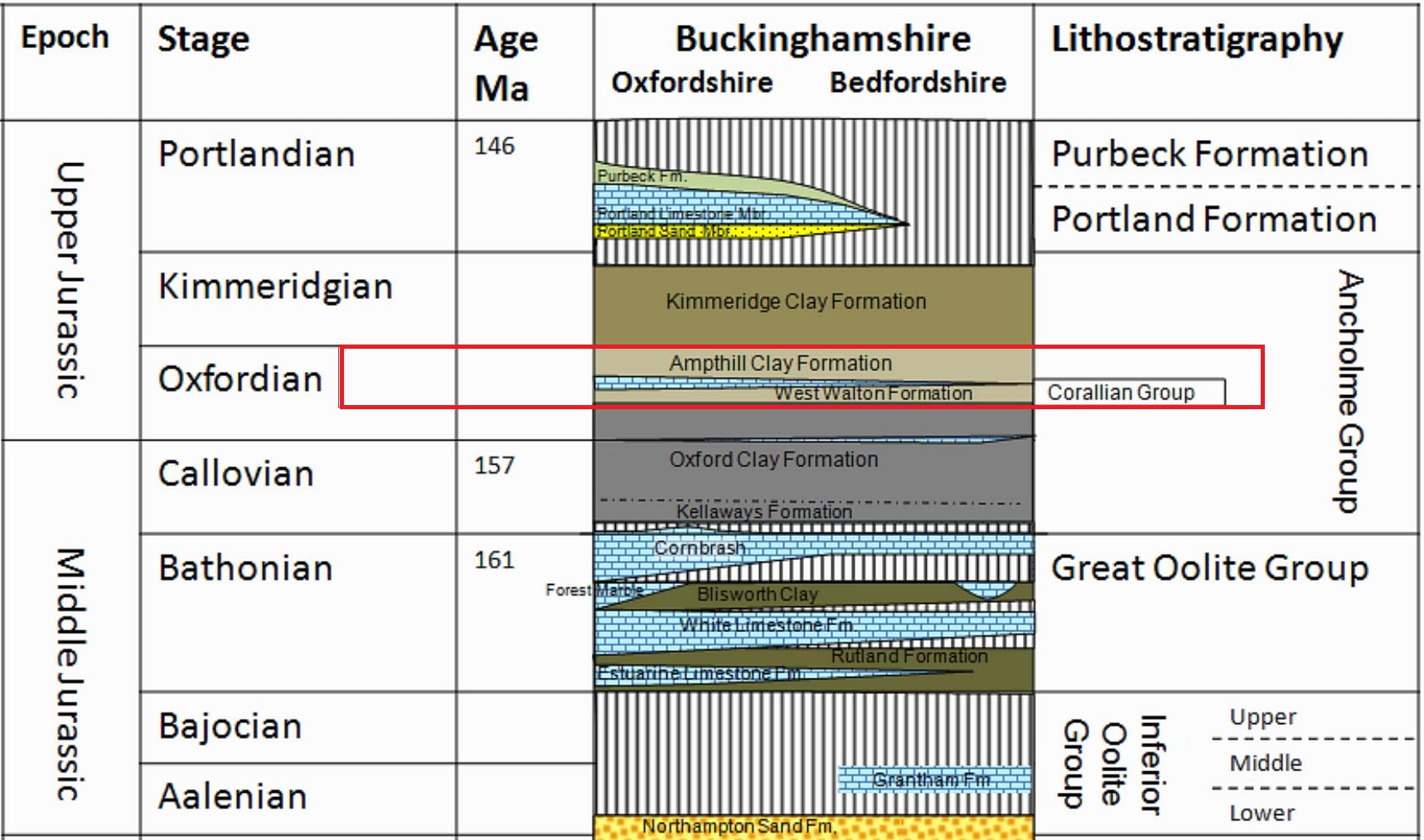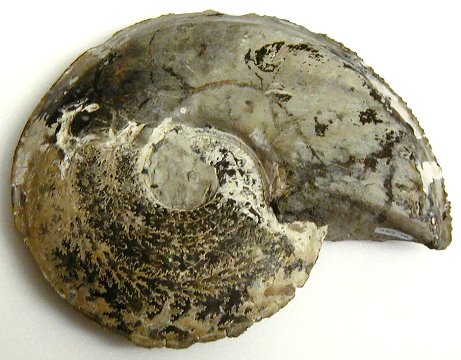|
Bucks Geology GroupAmpthill Clay Formation (including West Walton Formation)This succession of rocks falls within what was once referred to as "Corallian", between the Oxford Clay and the Kimmeridge Clay Formations. In Buckinghamshire it is almost all mudstone; the basinal equivalents of a substantial coralliferous limestone reef located beneath Oxford and Headington. To the west, approximately along the line of the Oxfordshire/ Buckinghamshire county boundary, the facies changes dramatically, being related to the palaeogeography of the Late Jurassic. The coral reef grew on the Oxford Shallows. In the basin to the east, mudstone accumulated, although a thin representative of more calcareous mudstone does extend out into the basin (Oakley Member) and an accumulation of sponge spicules marks the slope between the reef and the basin (Arngrove Spiculite Member).The West Walton Formation extends from the Corallian reef of Oxford, with which it is time-equivalent, to the Wash (and beyond). It comprises calcareous mudstone, silty mudstone and siltstone, with subordinate fine-grained sandstones and argillaceous limestone (cementstone) or siltstone nodules; typically rhythmic alternations of dark grey, silty mudstone (rich in fine-grained shell and plant material) with pale grey mudstone; ooidal, and in some cases coralline marls and limestones developed locally. In the Tring Borehole (just inside Buckinghamshire) this formation is more calcareous than at outcrop, probably being nearer the palaeo-shoreline. The base of the unit is taken at the lowest dark grey, silty mudstone resting, commonly with marked interburrowing, on pale grey, smooth-textured mudstones of the Oxford Clay Formation (Weymouth Member); commonly matching a marked colour change and break of slope at outcrop. Arngrove Spiculite Member Pale grey, siliceous or calcareous sandstone or siltstone with abundant siliceous spicules of Rhaxella perforata (tetractinellid sponge). 3.5m thick at M40 Pans Hill, but seen as field brash around Brill Hill and Boarstall. The base of this distinctive member is an upward transition from the silty mudstones of the West Walton Formation to coarser-grained, spiculitic sandstone. Oakley member Interbedded pale grey marls, silty, argillaceous micritic limestones, siltstones and silty to sandy mudstones, commonly containing scattered ferruginous ooids, and locally rich in <1>Nanogyra nana and serpulids. The base is a generally sharp, non-sequential, lithological change from sand or sandstone of the Arngrove Spiculite member or silty mudstone of the West Walton Formation. Definition of Upper Boundary: An upward change to mudstones of the West Walton Formation or Ampthill Clay Formation. Up to about 5 m thick. Around Wheatley to Westcott, north-east of Oxford, 
Diagram above: Stratigraphy of the Middle and Upper Jurassic in Buckinghamshire (Ampthill Clay Formation highlighted).
The Ampthill Clay is not permanently exposed anywhere in Buckinghamshire. Many fine fossils from this formation are, however, to be found reworked into the Ice-Age Boulder Clay, such as this fine ammonite, Ameoboceras serratum .
|


